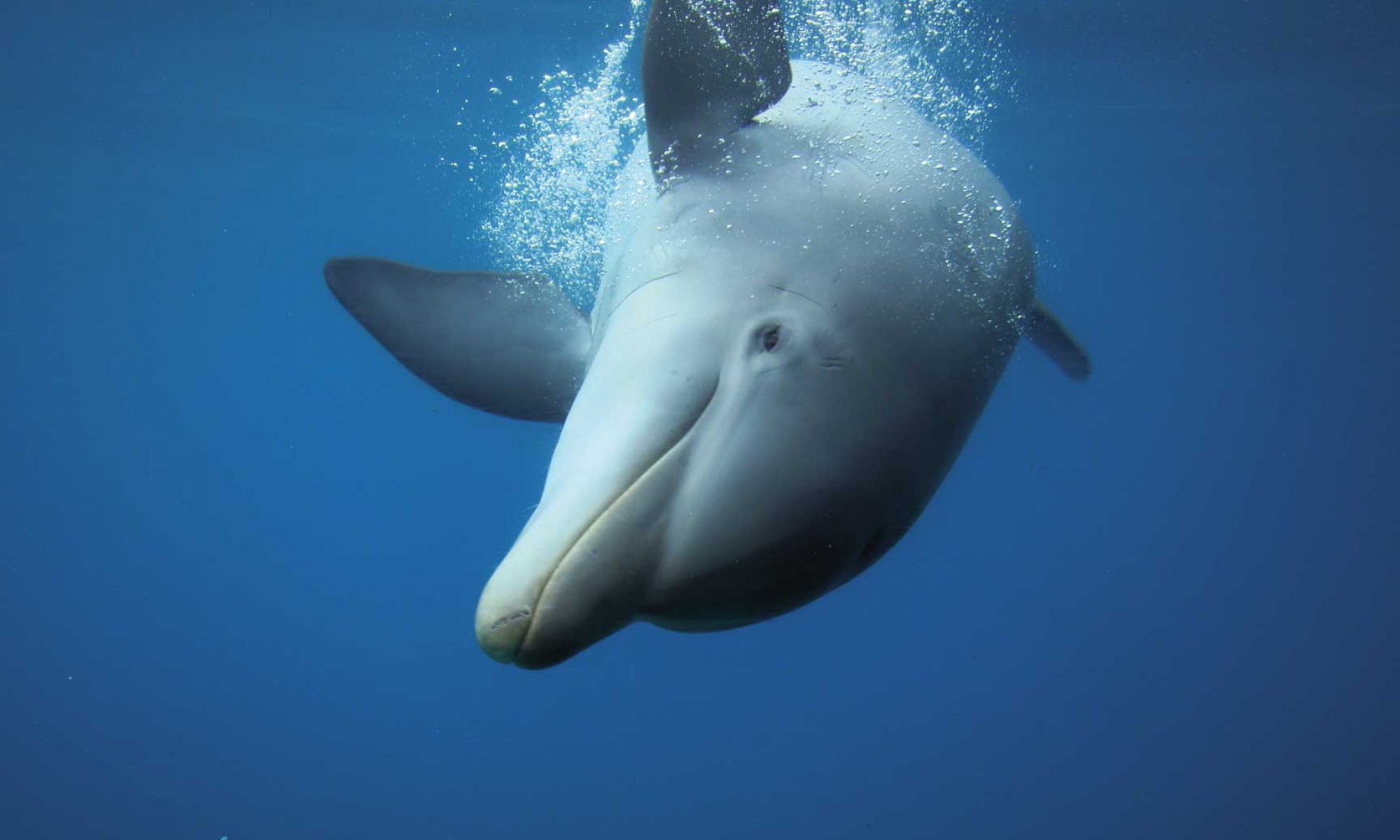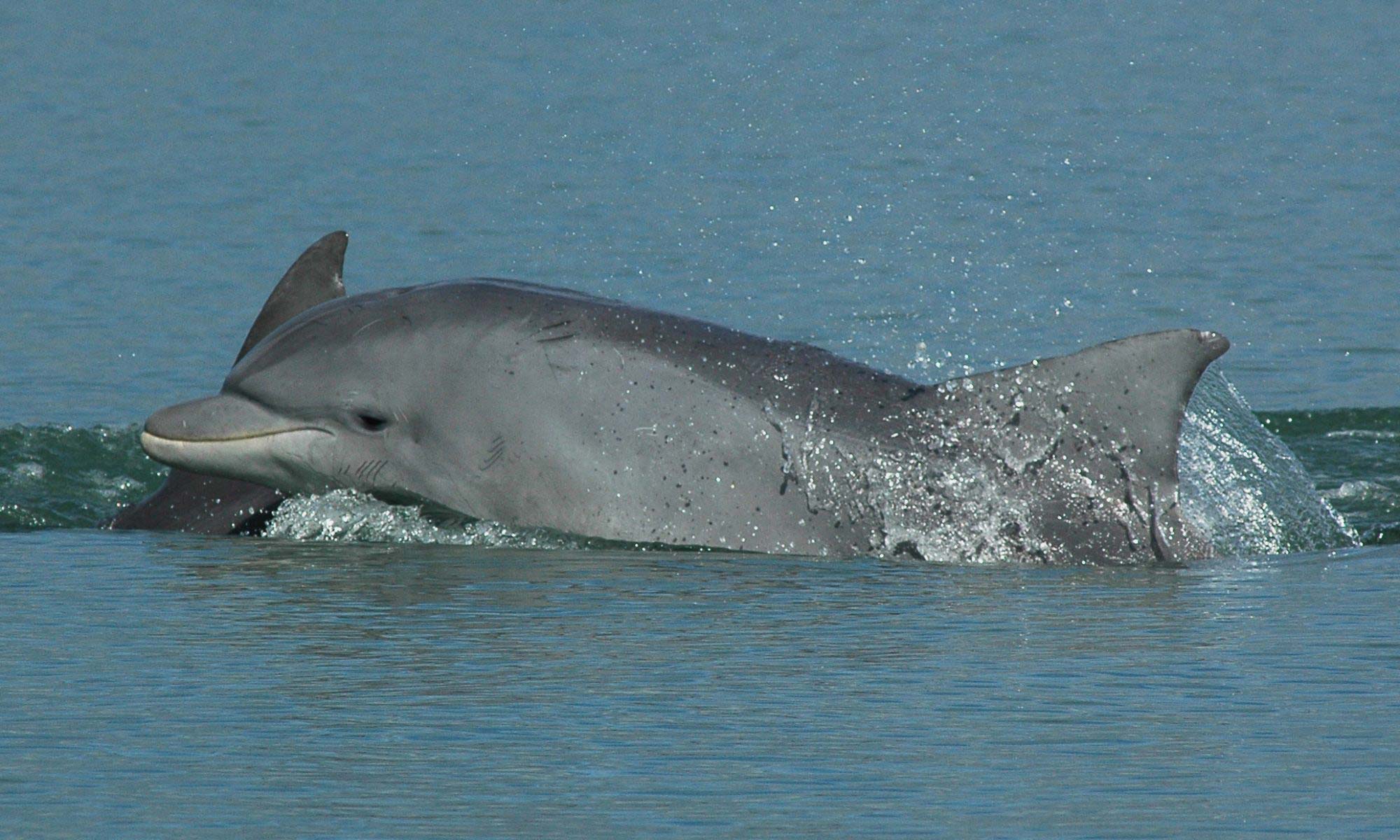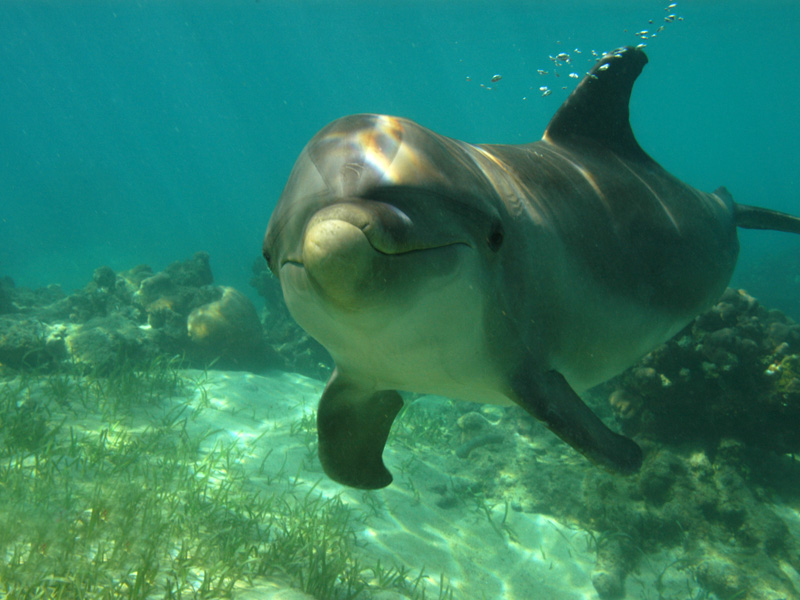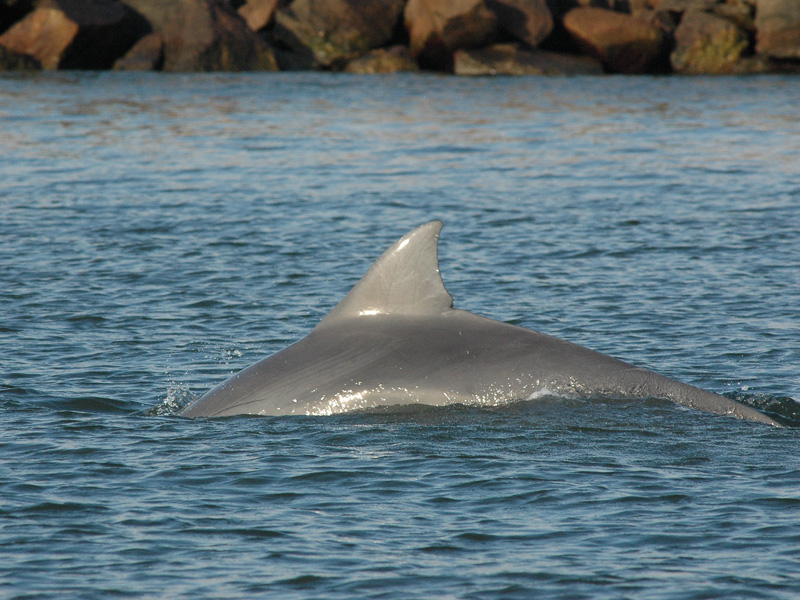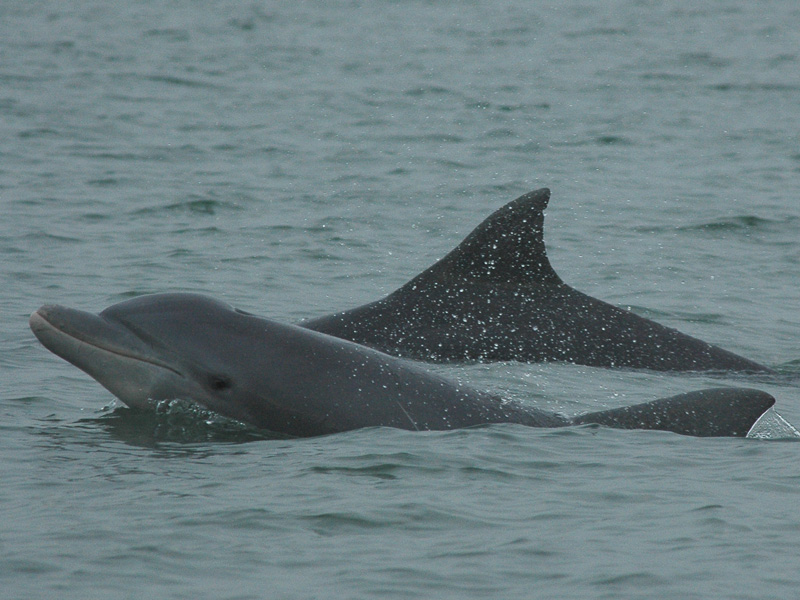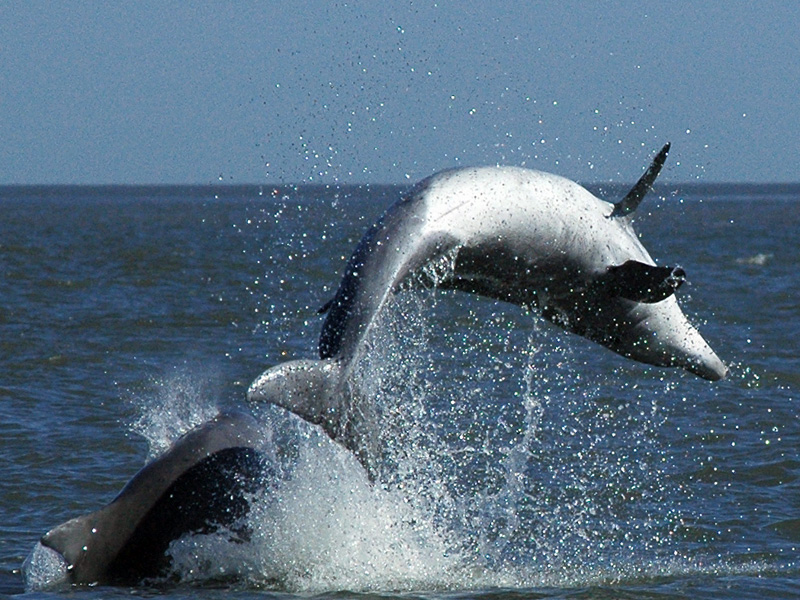The most well-known dolphin is the bottlenose dolphin (Tursiops truncatus).
It can grow to almost 4 m in length and weigh 500 kg. Its back is light gray to dark gray in color, and its belly is white. Its fin is crescent-shaped. Its beak is short and strong. A characteristic feature is the upward-sloping mouth, which gives the impression of a smile. Bottlenose dolphins are found in tropical and temperate waters, both in the open sea and along coastlines. They live in small groups of up to 20 animals, but can also be found alone. In coastal areas, populations are usually sedentary.
The groups consist of several females with their young and a few males. Young males often form bachelor groups and roam together for years.
In addition to body language, bottlenose dolphins communicate with each other using a variety of whistles and clicks. Each animal also has a very characteristic, individual whistle that serves as a recognition tone.
The bottlenose dolphin Tursiops truncatus feeds on various species of fish and squid and has developed different hunting techniques and tool use depending on its habitat. Echolocation can be used to locate food, examine objects, and navigate in poor visibility conditions. This involves emitting high-frequency clicks that are reflected by objects, creating an auditory image of the surroundings.
dangers
Although the globally widespread bottlenose dolphin is not an endangered species, local coastal populations in many countries are threatened to varying degrees. In most cases, the danger comes from the fishing industry, with hundreds of animals getting caught in nets with fatal consequences.
YAQU PACHA is working with researchers from the Federal University of Rio Grande (FURG ) to protect endangered Lahille's bottlenose dolphins (Tursiops gephyreus) in Lagoa dos Patos, Brazil.
Bottlenose Dolphin Project | Latin America Team | Amazon Dolphin Project | Videos | Chilean Dolphin | La Plata Dolphin Project | 30 Years of YAQU PACHA e.V. | Summary of a Successful Workshop | Species Conservation | Animal Species Protected by YAQU PACHA | Sotalia Dolphin | Sotalia Dolphin Project
